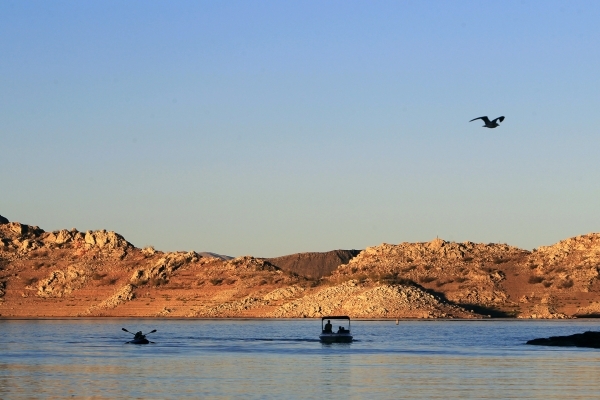Winter is no time to forget about boating safety

As a general rule, foul weather is a blessing for duck hunters. Winds and cloud cover associated with weather fronts help to increase daytime bird activity and reduce glare from shotgun barrels and hunters’ faces, which can then translate into increased opportunity and success for waterfowl hunters.
However, passing weather fronts bring with them increased safety concerns, especially for those who hunt waterfowl from a variety of watercraft. Unfortunately, it sometimes takes a tragic event to remind us the rules of safe boating apply to hunters as well as recreational boaters.
Officials in Oklahoma are searching for missing country singer Craig Strickland of Springdale, Ark. The 29-year-old lead singer of the group Backroad Anthem went missing Sunday during a duck hunting trip at Kaw Lake, north of Oklahoma City. The dead body of his hunting companion, 22-year-old Chase Morland, was found Monday not far from their capsized vessel.
Sam, Strickland’s Labrador retriever, was found alive at the time Morland’s body was discovered. On Twitter, Strickland’s wife, Helen Strickland, wrote: “For everyone wanting to know, Sam is fine. He was a brave boy. He wouldn’t leave Chase’s body until the Warden found him.
Morland sent out this rather ominous tweet Saturday, “In case we don’t come back, @BackroadCRAIG and I are going right through Winter Storm Goliath to kill ducks in Oklahoma.”
The search for Strickland continues while family, friends and fans hope and pray. According to the U.S. Coast Guard, there were 153 boat accidents attributed to hazardous waters in 2014, resulting in 55 fatalities and 90 injuries. Conditions that undoubtedly came with Goliath and its high winds, freezing temperatures, and ice and snow storms.
“Hunters are involved in an average of 35 major boating accidents per year, resulting in 14 deaths and 27 serious injuries. Eighty percent of these reported deaths occurred by drowning, and 85 percent of the victims were not wearing a personal flotation device,” notes Ducks Unlimited on its website.
Before you load up the boat for a day of waterfowl hunting, make sure you have a personal flotation device or life jacket on board for each person you will have on your boat. In today’s world, with life jackets being offered in many styles and colors — camo included — there is no reason for not having a properly fitting life jacket. An emergency situation is not the time to figure that out.
Also, make sure you have a throwable cushion that carries the Coast Guard’s approval. A life jacket is not designed to be thrown to a struggling swimmer, but the throwable cushion is.
Be careful about how you load your boat and how much you load into your boat. Each boat has a capacity plate that designates the maximum weight or number of people it is designed to carry safely. Exceeding that limit will put you and your passengers at risk. Keep in mind the boat’s stated capacity by weight includes people, equipment and the motor. Stow your gear along the boat’s center line and slightly to the rear so the bow is slightly raised while underway.
Neoprene waders can be a plus, even when riding or hunting from a boat. They have insulating capability and can help you stay afloat in the water when your safety belt is properly fastened around your waist, but they will not replace a life jacket.
Keep in mind, that should the unthinkable happen, no one will know where to start looking for you if you haven’t told them where you are going. File a trip plan with a responsible adult. Include detailed information about your means of travel, your destination and a list of companions. Also be sure to include the time you plan on leaving and your estimated time of arrival on your return trip.
Our most valuable safety tool lies between our ears. Remember to use common sense and don’t be afraid to call off a trip if the weather conditions are too rough to pull off your planned adventure safely. Don’t cave in to peer pressure.
In the meantime, let’s hope and pray for Craig Strickland, the searchers and his loved ones.
— Freelance writer Doug Nielsen is a conservation educator for the Nevada Department of Wildlife. His “In the Outdoors” column, published Thursday in the Las Vegas Review-Journal, is not affiliated with or endorsed by the NDOW. Any opinions in his column are his own. He can be reached at intheoutdoorslv@gmail.com.












